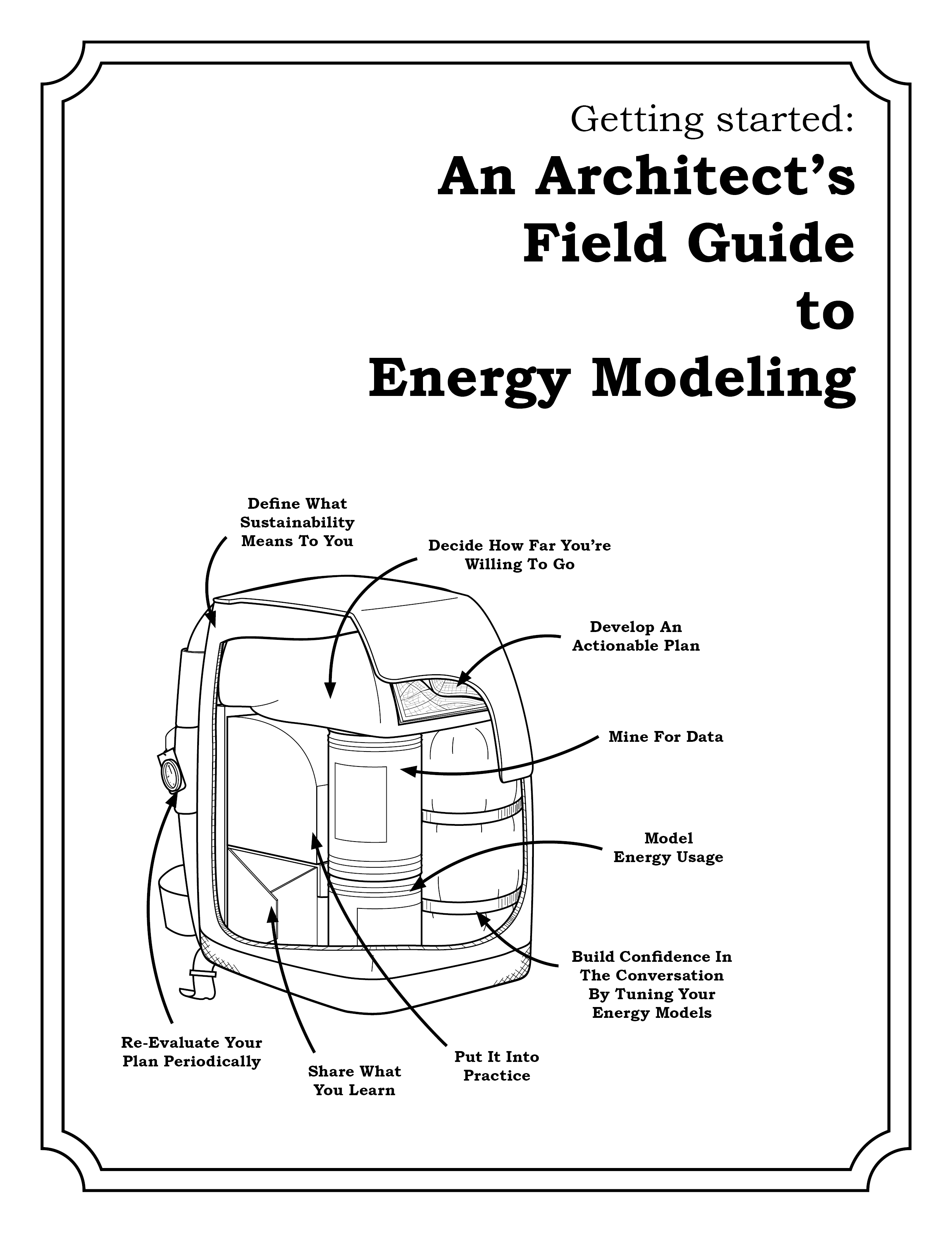
Contributors: Andrew McKinley, AIA, LEED AP and Mickey Chapa, AIA, LEED AP BD+C, LFA
Architects are at the forefront of design decisions that impact energy consumption, yet we are on the tail end of analyzing these decisions. Reliance on mechanical engineers to inform us of the consequence of our decisions cannot continue if we are going to influence the future sustainability of the built environment. Whether you’re new to projecting and analyzing your projects’ energy usage or a seasoned professional, this guide will help orient you towards achieving your targets. Implementing a consistent approach to energy modeling within your firm is a labor-intensive effort. Before launching, get prepared by packing your bag with the tools you’ll need to be successful.
Define what sustainability means to you. Since you’ll be contributing a lot of recurring energy to this topic, orient your firm’s initial focus on what you’re most interested in. Is it reduced electrical loads through daylighting? Mitigating embodied carbon? Comparing various HVAC systems? The options are endless. Choose one or two of interest to focus on. This is critical to ensure your firm’s resources are consistently fueling the effort.
Decide how far you’re willing to go. Determine how much energy you are willing to contribute to this endeavor. On top of all the other things you’re doing as an architect, this will take added time, energy, and endurance. By definition, sustainability means “maintaining at a certain rate.” Decide what pace your firm can handle before you get going.
Develop an actionable plan. Now that you know your pace and direction, set your milestones. Establishing goals and metrics will let you know when you have achieved success. Sustainability certifications, reduced energy bills, and implementation of new sustainability features on built projects are just a few forms of success indicators. Put thought into what will provide your firm with a feeling of achievement; always celebrate your successes to reenergize.
Mine for data. Utility invoices are rich with information. Since you’ll need metrics, reach out to past and current clients to request this information. Do it periodically, at least on an annual basis. For major rehabs, before-construction bills provide an indisputable energy use baseline. On all built projects, post-construction invoices are invaluable. Collect as much data as you can to span different seasons and years. This information will serve as a reliable resource for energy use comparison between projects and over time.
Model energy use. Early-design-phase energy-modeling software has becoming more readily available and simpler to use. Be sure to select a software that is compatible with your firm’s interests and workflow. If your firm utilizes Revit at a high level, Sefaira is a great tool. If you’re savvy with SketchUp, OpenStudio might be a better choice. Research the available options and select the one that is most streamlined with your firm’s current software familiarity. You’ll want to be sure energy is spent on your sustainability goals, not consumed by integrating multiple new software at the same time.
Build confidence in the conversation by tuning your energy models. Now that you have collected real-world data through utility bills, take a moment to run an energy model analysis for a completed project. Compare these results with the known utility information to be sure you can trust the output from the model. If they don’t align, go through the energy modeling software to be sure the information you’ve input accurately reflects built project conditions. A margin of uncertainty will inevitably exist; the objective is to establish the limits of a consistent, reliable margin. When you’re developing energy models on future projects, you’ll have the confidence to inform your clients of energy use expectations, considering your margin of course, before they’ve been built.
Put it into practice. Remember to stay flexible. Each project will have its own constraints, goals, and scope that won’t perfectly align with your firm’s interests and goals. Align the project-specific opportunities with your firm’s interests and focus on what you can confidently move forward.
Share what you learn. Individual firms are limited in the amount of data they can collect and analyze. As a community, we are capable of creating a vast database of information. Tools such as Energy Star Portfolio Manager and ArcSkoru are free and enable users to input energy data. These resources enable firms to compare energy use for similar project types, geographic regions, and sizes for relative comparisons about building performance.
There’s a lot to learn along the way and no plan is perfect. Re-evaluate your plan periodically. Revisit your definition of sustainability and the pace that you originally projected for achieving your goals. Whether they require a little tweaking or a wholesale revision, take a moment to reflect and update. Leading the design and construction industry to a sustainable future is a process that will take time, so start taking steps now and keep moving forward.
About the Authors
Andrew McKinley AIA, LEED AP is a Principal and Mickey Chapa AIA, LEED AP BD+C, LFA is Project Architect and Sustainability Director with Via Design Architects.
